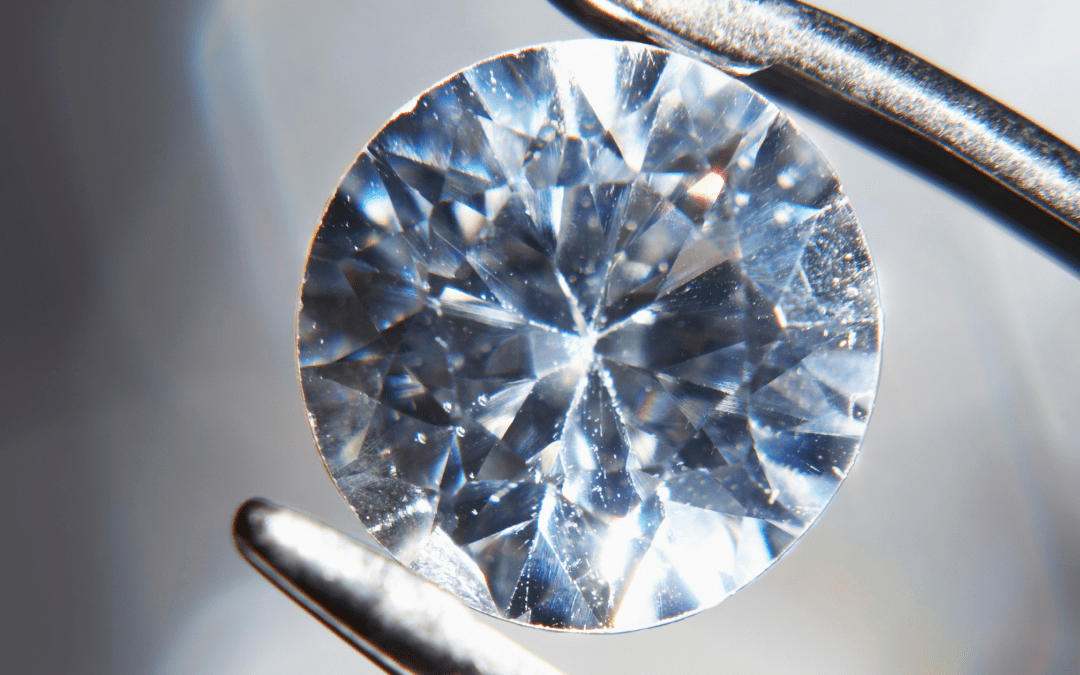An inclusion in a diamond is a tiny imperfection, flaw, or impurity. Diamond inclusions change the clarity of the stones and negatively affect a diamond’s grade. All diamonds are graded on the four-part evaluation scale known as the 4Cs: color, cut, clarity, and carat. Each of these elements is critical, but clarity is not necessarily considered the most important.
The reason most diamonds have some type of natural inclusion, however minor, has to do with how diamonds are formed. Diamonds are created deep within the earth’s mantle, where they withstand immense heat and pressure. These conditions form natural inclusions as the diamonds form and grow, some of which are more common than others.
What Are “Eye Clean” Inclusions?
Many inclusions are undetectable to the naked eye and even under low levels of magnification, rendering them “eye clean” to those in the gem industry. Diamonds that are eye-clean may require up to 10x magnification for the inclusion or inclusions to be visible. All inclusions affect clarity to some extent, but you’d be surprised by what the brilliance of most diamonds can outshine.
How Diamond Inclusions Are Graded?
To understand how diamonds are graded for valuation and sale, get to know the range of clarity grades created by the Gemological Institute of America (G.I.A.) Each grade can be accompanied by a number, usually 1 or 2, that indicates the visual impact of the inclusion. For example, a VS2 would indicate a lower grade than VS1.
Diamonds graded as VVS (very, very small inclusions) and VS (very small inclusions) are popularly bought and sold. VVS1 is the third-highest rating for a diamond, while VVS2 is the fourth-highest rating.
A diamond inclusion that is considered eye clean means that the diamond’s inclusions are invisible without magnification. Gemologists in reputable diamond certifying labs will evaluate the location, type, and size of the inclusion, as well as whether the inclusion is internal or external, before assigning a grade.
What Are Diamond Clarity Grades?
- FL: Flawless
- IF: Internally flawless
- VVS: Very, very slightly included
- VS: VS: very slightly included
- SI: Slightly Included
- I: Included
You can refer to this scale created by the non-profit Gemological Institute of America (GIA) to understand how color, cut, clarity, and carat are rated by the GIA.
Which Grades Matter The Most?
Most of us can rule out the first two categories, FL and IF. Fewer than 0.05% of the world’s diamonds are graded as flawless, and together, flawless and internally flawless diamonds make up less than half of one percent of all diamonds in the world. The staggering jump in price may make you think that diamonds that are flawless or internally flawless are a good investment, but that isn’t true. Chances are that no one will be able to notice the difference between a flawless diamond and an eye-clean diamond with minor inclusions.
Any diamond that is graded SI1 or SI2 has small inclusions and may be a good place to start your diamond search. Avoid anything graded below SI2, as inclusions are likely to be visible to the naked eye. The lowest clarity grade, I (included), will certainly have visible imperfections. These diamonds are not recommended, and most reputable jewelers don’t carry them anyway.
Common Types of Inclusions
Some diamond inclusions are natural, meaning they occur during the formation and growth of the diamond. Other inclusions are man-made, often as a result of errors in cutting, polishing, or even handling the diamond. Nearly all diamonds have some type of inclusion. Benign inclusions will not impact the outer appearance of the stone, so don’t be afraid of these types of inclusions. Pinpoints, clouds, feathers, and internal graining are considered benign.
Natural Inclusions
Pinpoint inclusions constitute the most common type of natural diamond inclusion. When several pinpoints group together, that grouping is considered to be a cloud inclusion. The presence of pinpoints can lower a diamond’s value 10-35%, saving you money in the long run. Other types of natural inclusions are:
- Crystal Inclusions
- Feather Inclusions
- Diamond Cavities
- Etch Channels
- Internal Graining
- Twinning Wisps Inclusions
Man-made Inclusions
Other types of inclusions are created by humans during the handling, processing, cutting, or any other phase involved in taking a rough diamond and turning it into a faceted, polished stone. These types include:
- Internal Laser Drill Inclusions: The presence of a laser drill hole means that the diamond has been subjected to clarity enhancements. These holes may be very small.
- Chip Inclusions: Yes, a chip on a diamond is considered an inclusion. These can be natural but are usually man-made.
- Bearding: Beard inclusions result from poor polishing or cutting.
- Bruising: Bruise inclusions occur when the diamond is pressed too hard against a polishing wheel.
Should You Consider Buying a Diamond with Inclusions?
Since the vast majority of the world’s diamonds have inclusions of some kind, chances are that you will buy an included stone. Included diamonds can save you thousands of dollars, and most inclusions can’t be seen unless magnified up to 10x. Every diamond is unique, and slight imperfections are part of what makes them special.

